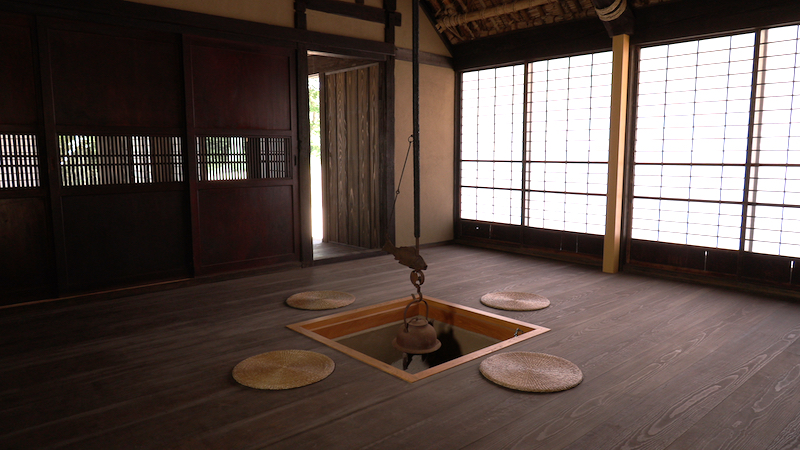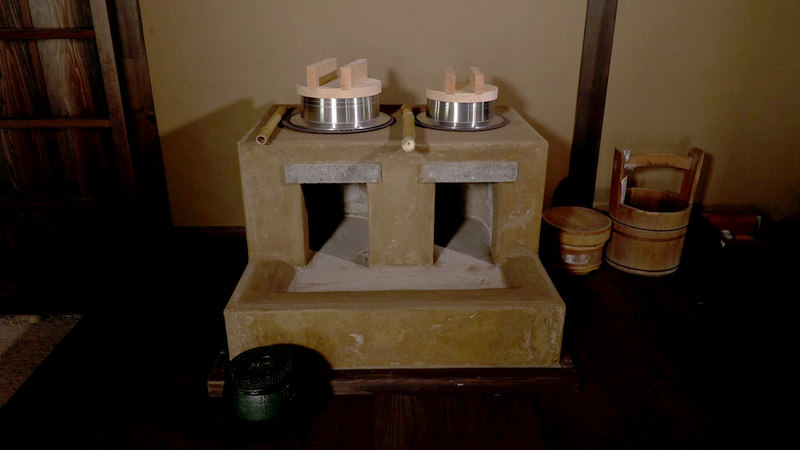Chamber
This room was used as a bedroom for the family or as a storage room for their clothes.
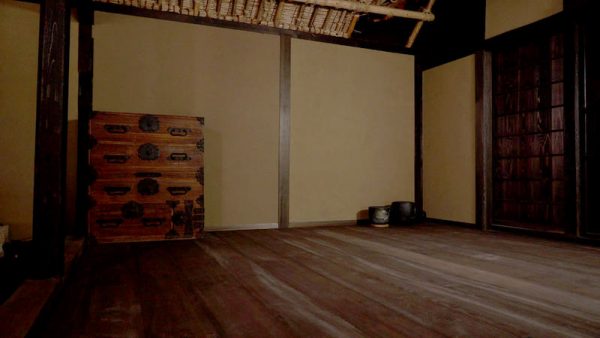
Folk crafts
Chest
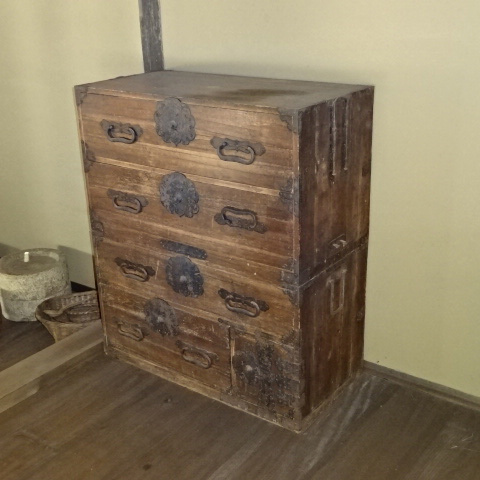
The chest is a type of furniture with drawers and doors used for storing clothes and tools.
Living room
This room was used for receiving daily visitors or for a meeting of a small number of people.
Folk crafts
Free pot-hook
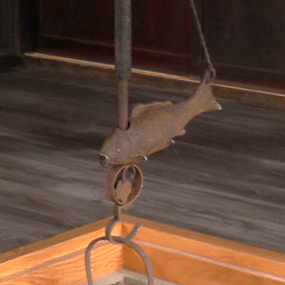
The free pot-hook is a tool for hanging a pot when cooking above the fire in the hearth. This tool hung from the beam above the hearth and is called a free pot-hook because its height or rotation is freely adjustable.
The crossbars, the wood pieces used for securing the pot-hook, range from a simple piece of wood with a hole to a decorative one in a fish, fan or gourd shape, which all represent good luck.
Hearth
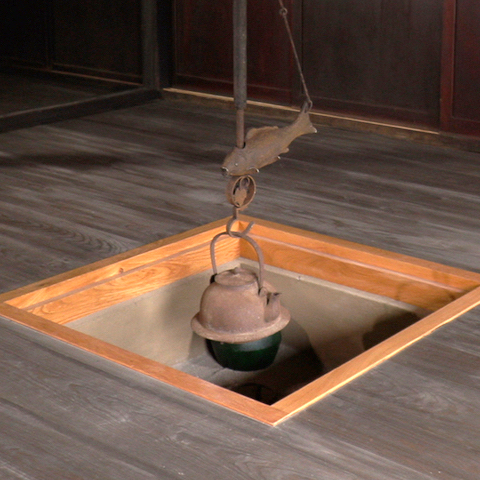
A sunken hearth is a type of furnace with a square-shaped cut out in the floor to make a fire. It is filled with ash, upon which charcoal or firewood was burned to cook food or heat the room. Each family member is supposed to sit in his/her appointed seat such as the “yokoza,”the seat farthest from the earthen floor, for the head of the family.
Kitchen
This space was used as a kitchen, where the movable cooking stove was placed.
Folk crafts
Cooked rice container
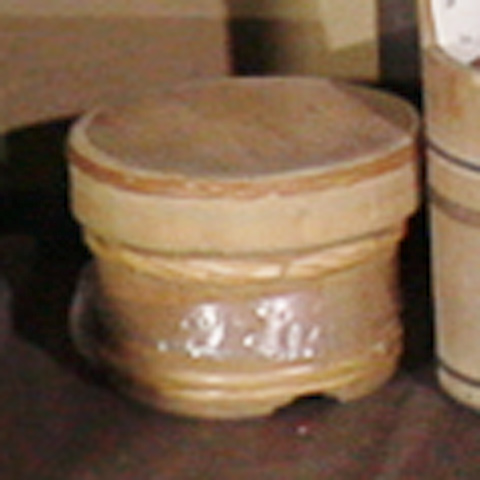
The cooked rice container is a container to store cooked rice. Cooked rice in an iron pot is transferred to a cooked rice container. Since the container is made of wood, it effectively absorbs excess moisture from the freshly cooked rice, and keeps rice tasty. In the cold regions, the cooked rice container is further wrapped with a heat-insulating straw basket to keep it warm. The straw acts as an insulator.
[Archived at Ibaraki Prefectural Archives and Museums]
Stone hand mill
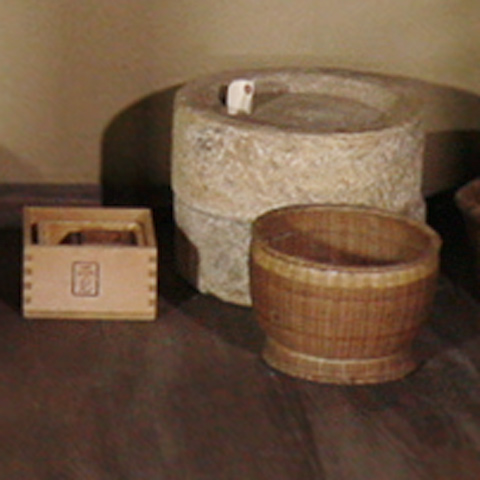
The stone hand mill is a tool made of a pair of stones to grind chaffy wheat, buckwheat or other by spinning the upper runner stone above the lower stationary bed stone.
Individual box-shaped table
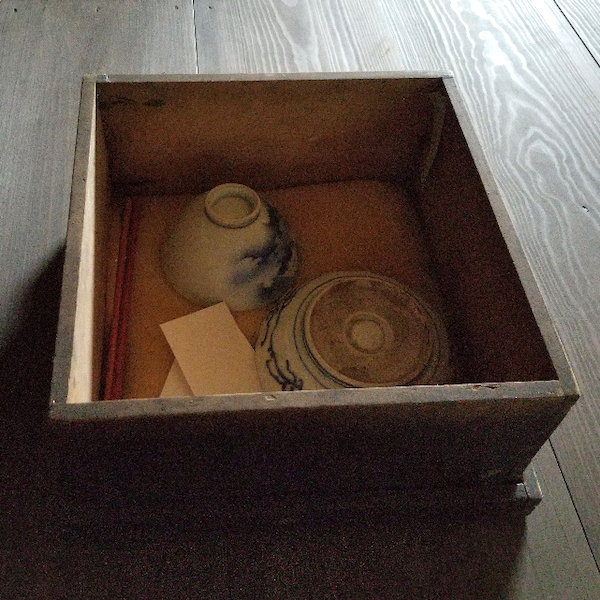
The individual box-shaped table stores individual tableware and chopsticks in a box with a lid, and the lid was turned over and used as a table at dinner. In the past, it was customary for each member of the family to have his/her own box, ate everything in his/her box, pour hot tea into the bowl and drank it at the end; then the box was put away without washing.
[Archived at City of Hitachinaka Board of Education]
Movable cooking stove
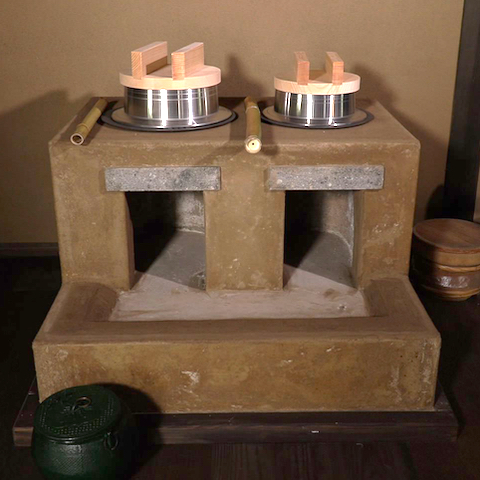
The cooking stove is an apparatus that encloses fire for cooking grains and other foodstuffs. The stove was often built into the earthen floor, but, in some cases, placed on the wooden floor, therefore, it is called an “okikamado”. A movable cooking stove can be placed either on the earthen floor or on the wooden floor.
Room with a wooden floor
A sunken hearth was cut in the middle of the floor, around which the family dined, enjoyed each other’s company, and relaxed.

Folk crafts
Free pot-hook
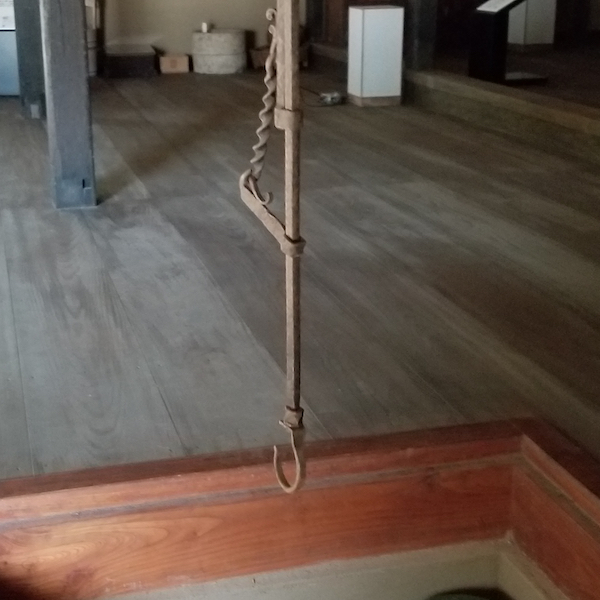
The free pot-hook is a tool for hanging a pot when cooking above the fire in the hearth. This tool hung from the beam above the hearth and is called a free pot-hook because its height or rotation is freely adjustable.
The crossbars, the wood pieces used for securing the pot-hook, range from a simple piece of wood with a hole to a decorative one in a fish, fan or gourd shape, which all represent good luck.
Hearth

A sunken hearth is a type of furnace with a square-shaped cut out in the floor to make a fire. It is filled with ash, upon which charcoal or firewood was burned to cook food or heat the room. Each family member is supposed to sit in his/her appointed seat such as the “yokoza,”the seat farthest from the earthen floor, for the head of the family.
